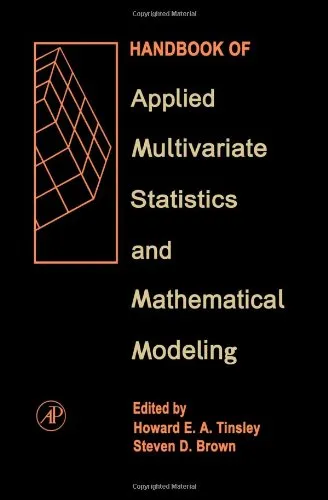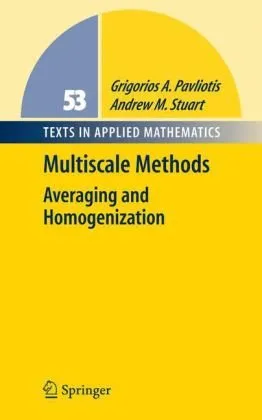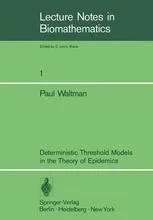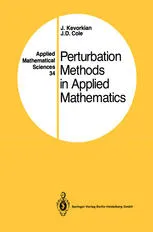An Introduction to Mathematical Epidemiology
4.7
Reviews from our users

You Can Ask your questions from this book's AI after Login
Each download or ask from book AI costs 2 points. To earn more free points, please visit the Points Guide Page and complete some valuable actions.Related Refrences:
Introduction to "An Introduction to Mathematical Epidemiology"
"An Introduction to Mathematical Epidemiology" is a comprehensive text designed to equip readers with the fundamental mathematical concepts and tools necessary to understand and analyze the spread of infectious diseases. Written by Maia Martcheva, this book bridges the gap between mathematical theory and practical epidemiological applications, serving as both a primer for beginners and a valuable resource for advanced researchers.
Detailed Summary of the Book
The book is expertly crafted to cater to a diverse audience, including mathematicians, public health policymakers, biologists, and other professionals interested in the dynamics of infectious disease outbreaks. It offers a unified and systematic introduction to the mathematical modeling of diseases, starting from basic principles and progressing to more advanced topics.
The content unfolds over a series of chapters, covering a broad range of critical topics. It begins with an introduction to epidemiological principles, such as disease transmission, recovery rates, and control measures. The text then delves into classic mathematical models, including the SIS, SIR, and SEIR models, providing explanations both in a deterministic and stochastic context. Readers will gain an understanding of how these models can capture the essence of pathogen dynamics and predict future trends.
In addition, the book explores real-world challenges such as parameter estimation, uncertainty quantification, and the role of vaccination strategies. With a strong emphasis on mathematical rigor, every concept is supported by numerous examples, illustrations, and practical case studies that enhance comprehension. Theoretical frameworks are complemented by numerical simulations to provide hands-on experiences for readers. By the end of the book, you will have the knowledge and tools to model and analyze critical health issues using mathematical approaches.
Key Takeaways
- An in-depth understanding of the principles behind mathematical epidemiology.
- Mastery of core epidemiological models like SIS, SIR, and SEIR, and their application to real-world diseases.
- Techniques for parameter estimation, stability analysis, and the interpretation of mathematical results in a biological context.
- Practical knowledge of how to apply models to evaluate public health interventions, such as vaccination and quarantine measures.
- Insight into the stochastic nature of disease dynamics and its implications for policy-making.
Famous Quotes from the Book
"Mathematical epidemiology is not merely about equations and proofs; it is about understanding our world and guiding humanity through the challenges of infectious diseases."
"The beauty of an epidemic model lies not in its complexity but in its ability to illuminate the mechanisms of disease spread."
"In the face of a pandemic, mathematics is as pivotal as medicine in saving lives."
Why This Book Matters
The importance of "An Introduction to Mathematical Epidemiology" cannot be overstated, particularly in an era marked by global health crises such as pandemics. With the emergence of diseases like COVID-19, Ebola, and Zika, understanding the mathematical frameworks that inform our response strategies is more crucial than ever.
The book serves as a guide for both academics and practitioners to make informed decisions based on mathematical evidence. From designing public health policies to evaluating vaccination campaigns, the insights provided in this text empower readers to tackle complex epidemiological issues with confidence. Furthermore, its accessible style ensures that even those without a strong mathematical background can benefit from its teachings.
By demystifying the mathematics behind disease modeling, this book contributes to a larger goal: equipping society with the knowledge it needs to prevent outbreaks and mitigate their effects. Whether you're a student, researcher, or policymaker, "An Introduction to Mathematical Epidemiology" is an indispensable resource in the fight against infectious diseases.
Free Direct Download
You Can Download this book after Login
Accessing books through legal platforms and public libraries not only supports the rights of authors and publishers but also contributes to the sustainability of reading culture. Before downloading, please take a moment to consider these options.
Find this book on other platforms:
WorldCat helps you find books in libraries worldwide.
See ratings, reviews, and discussions on Goodreads.
Find and buy rare or used books on AbeBooks.
1492
بازدید4.7
امتیاز0
نظر98%
رضایتReviews:
4.7
Based on 0 users review
Questions & Answers
Ask questions about this book or help others by answering
No questions yet. Be the first to ask!















